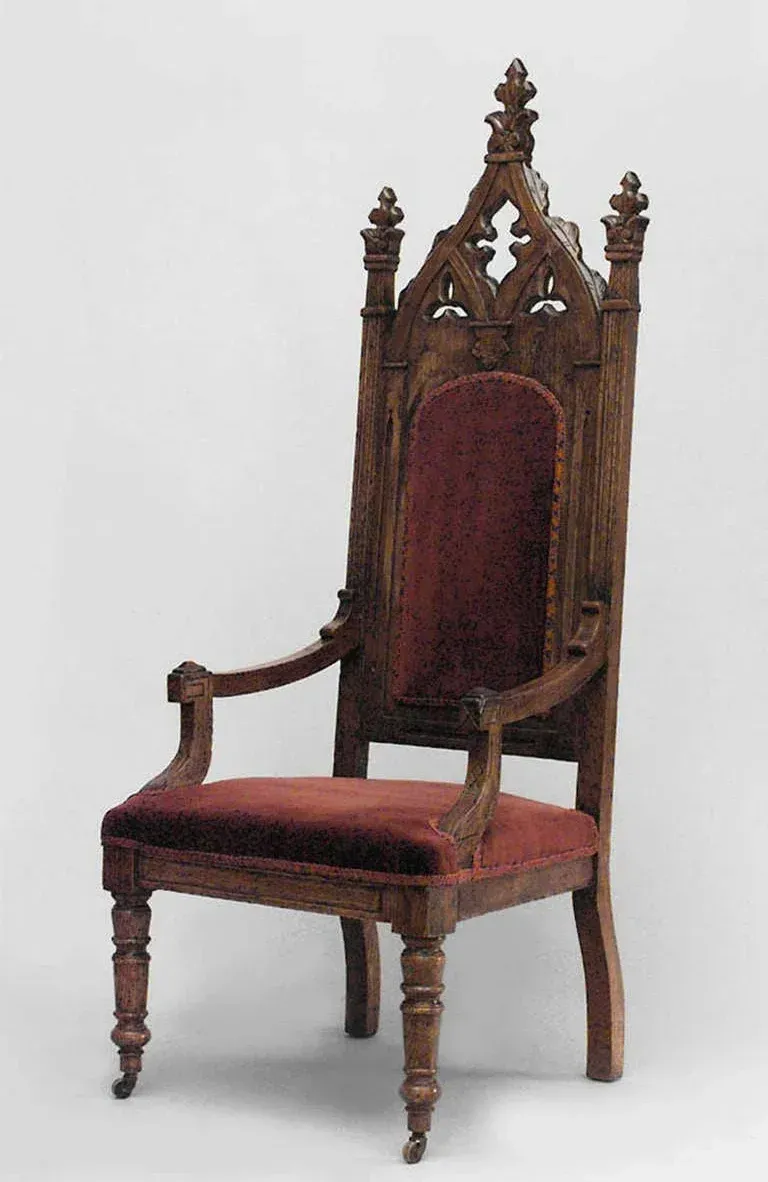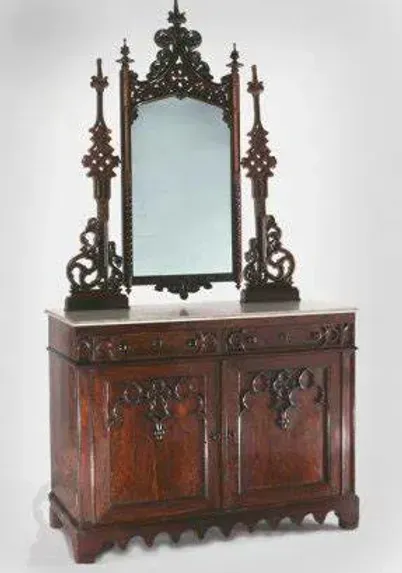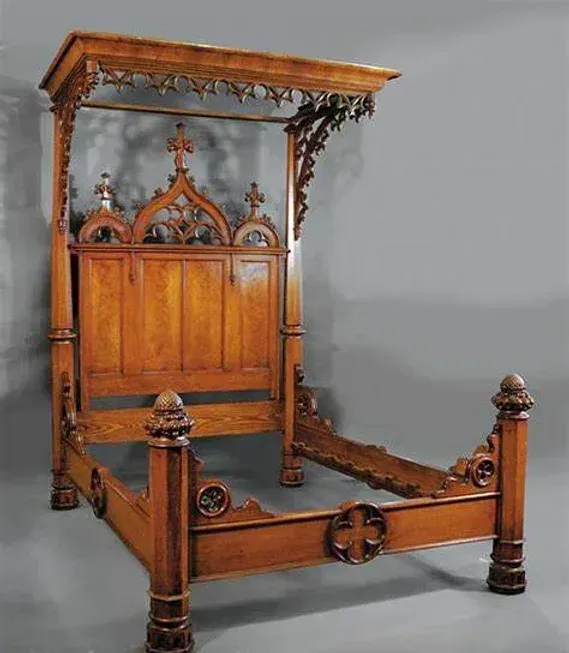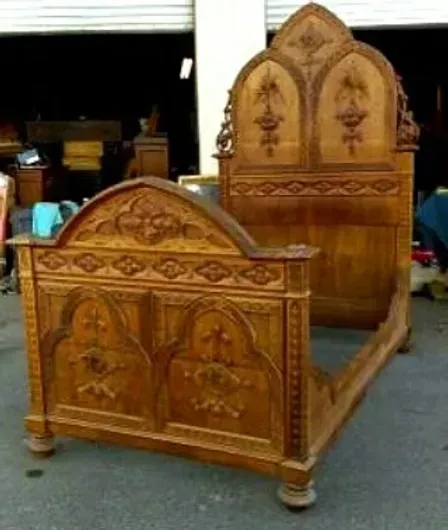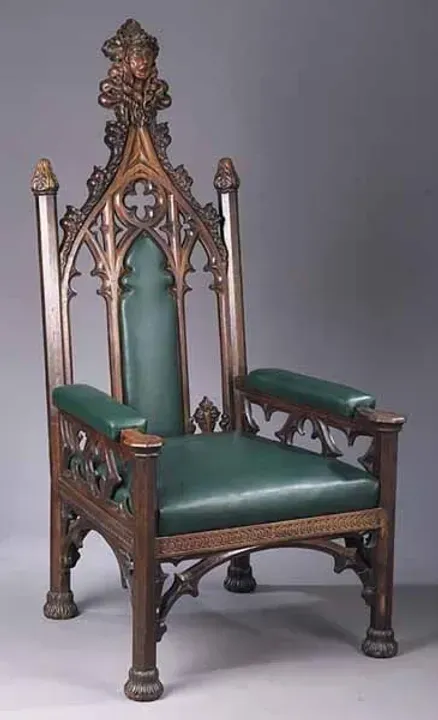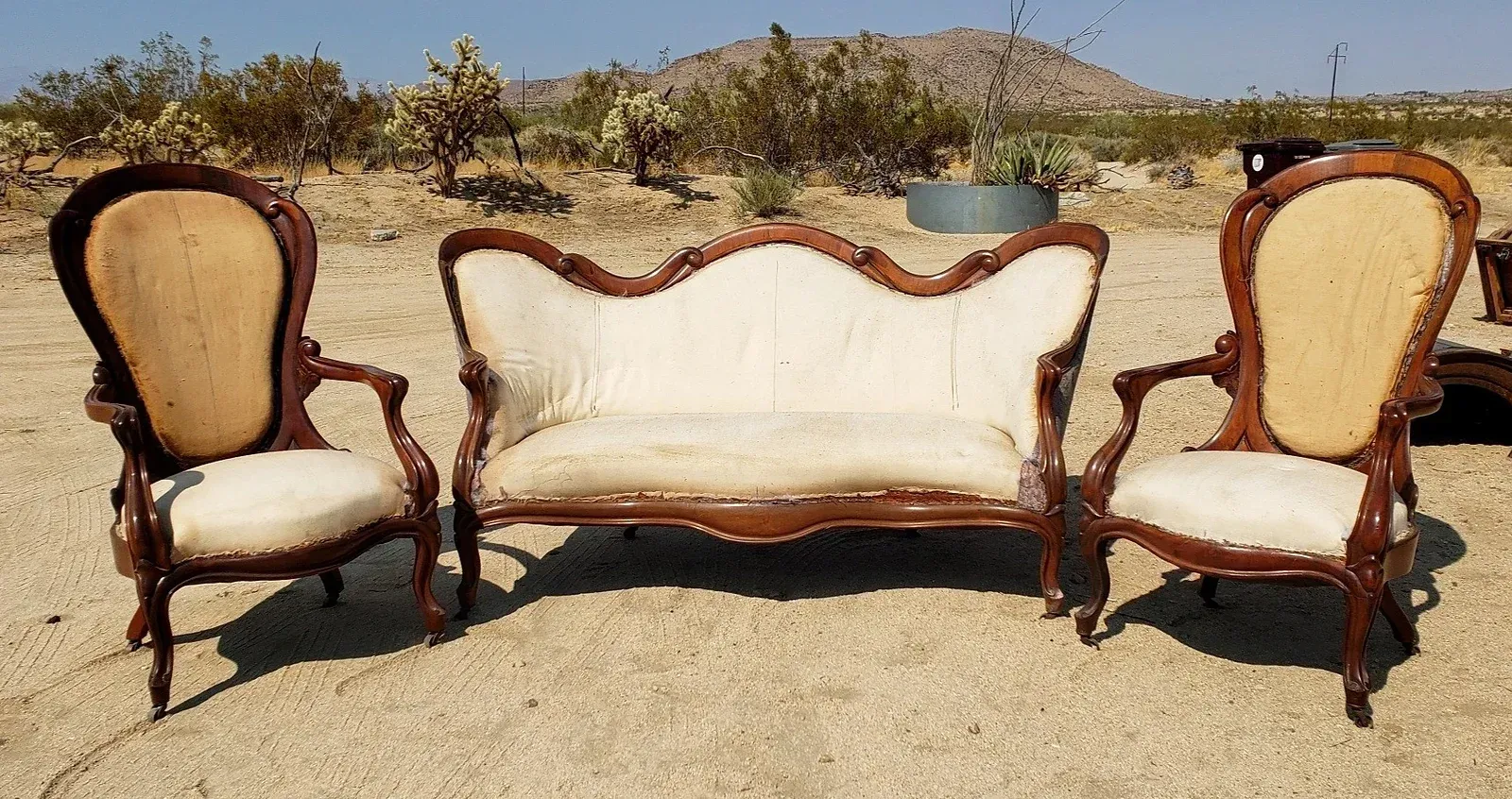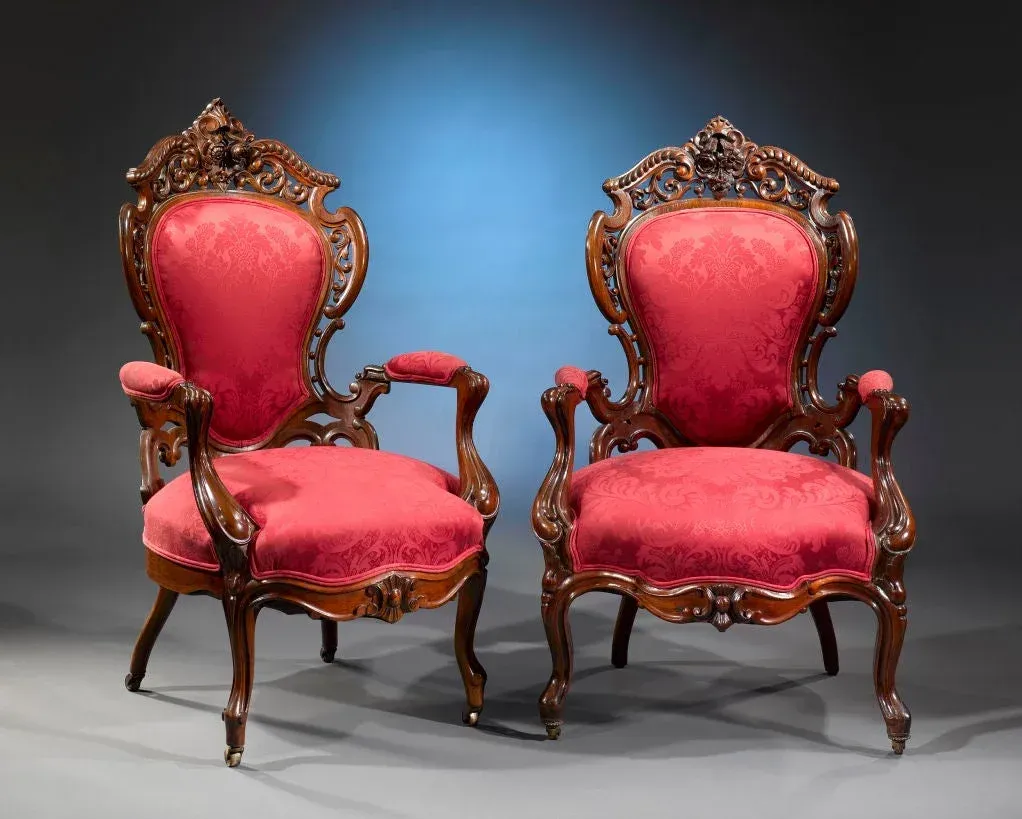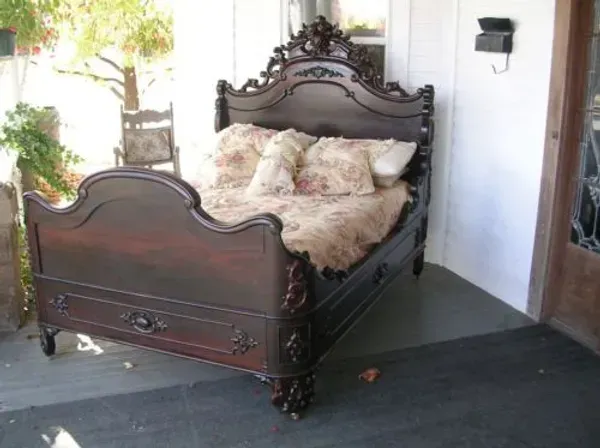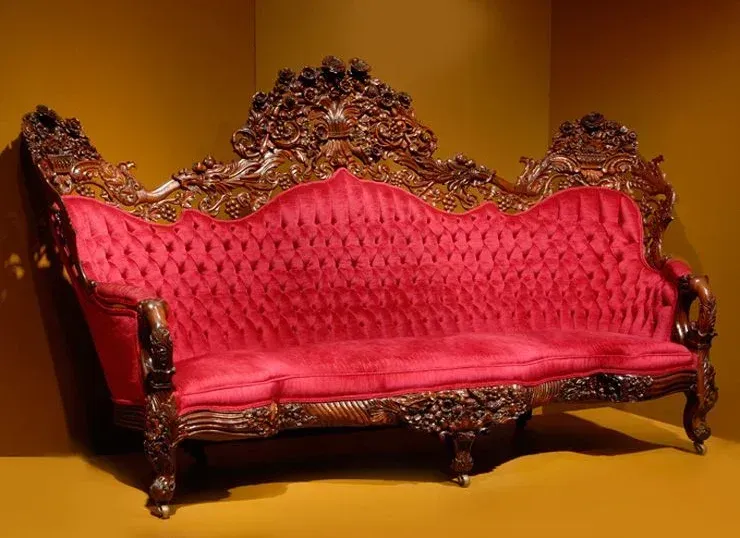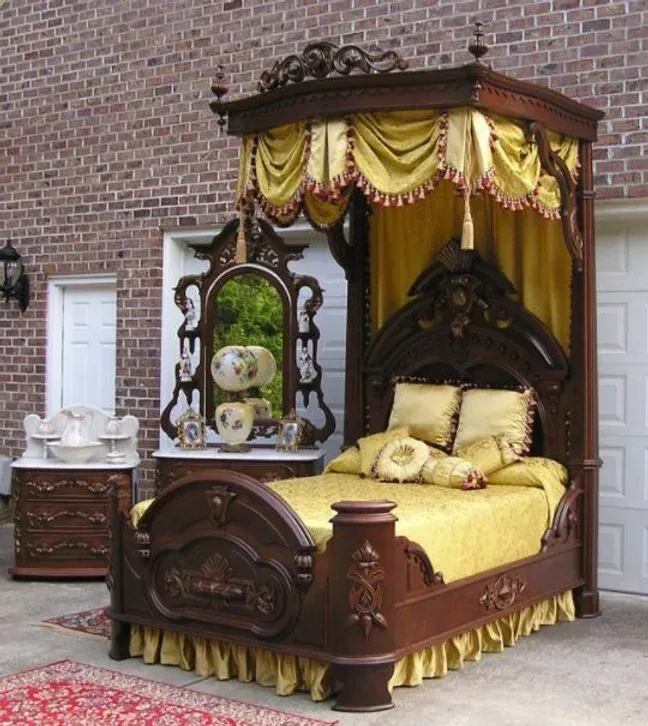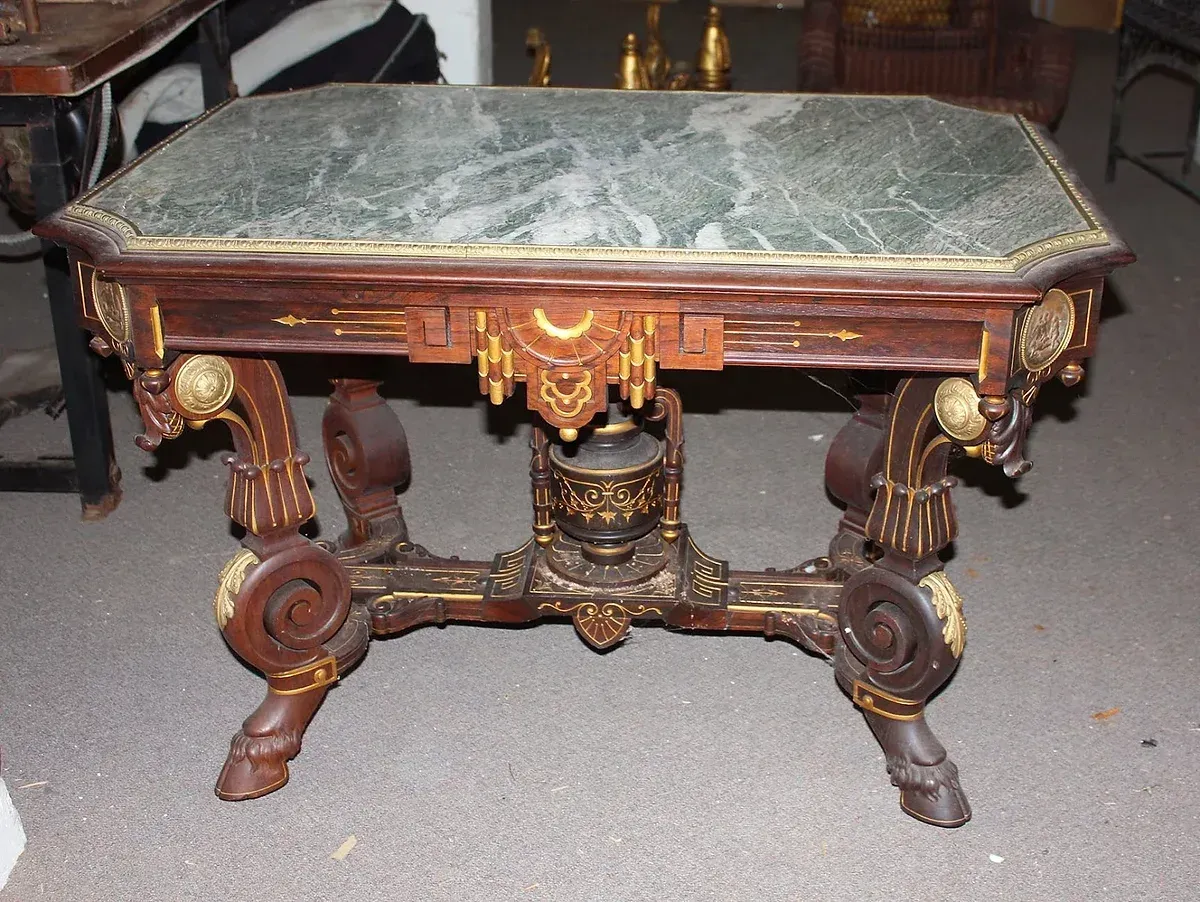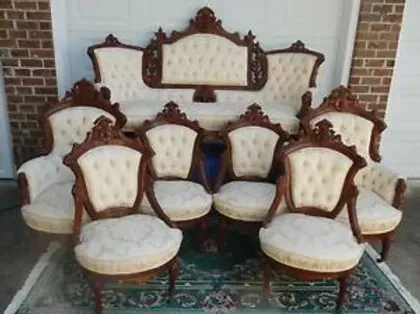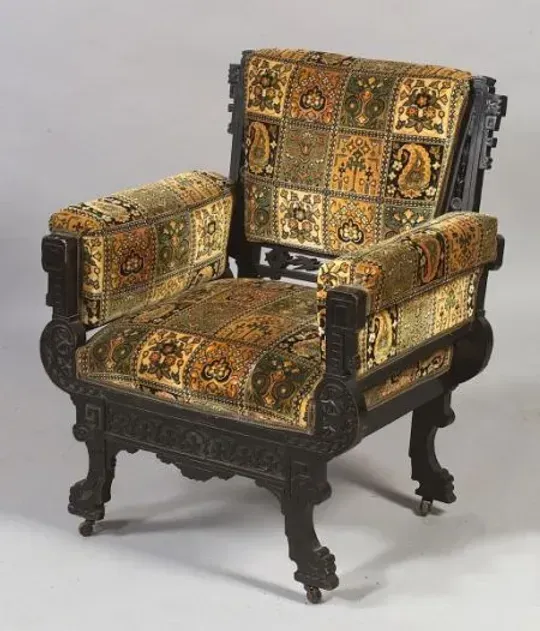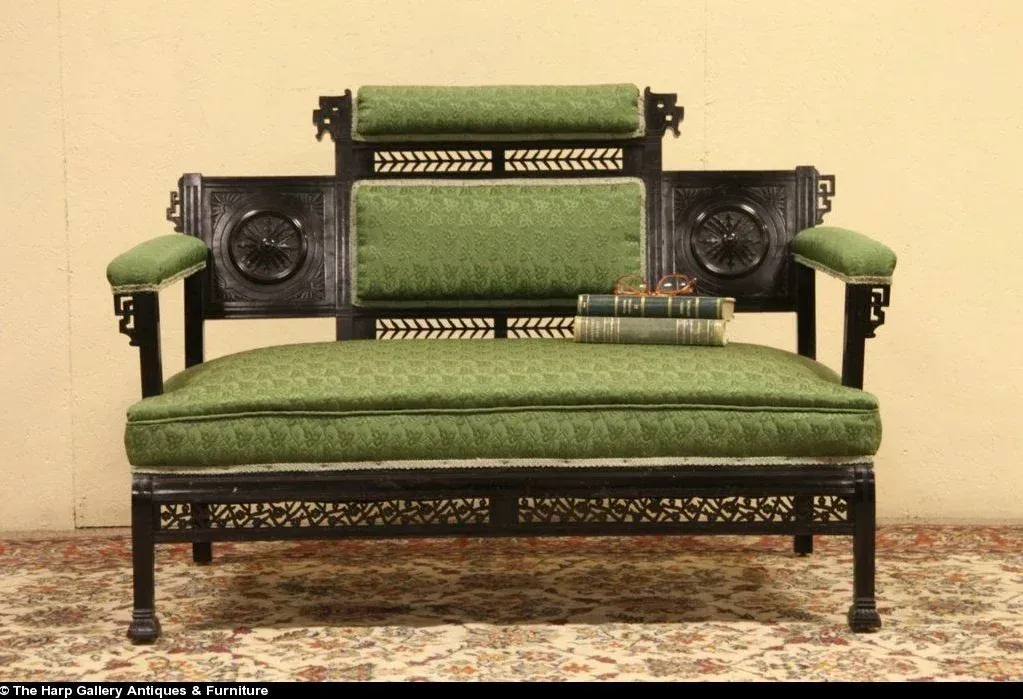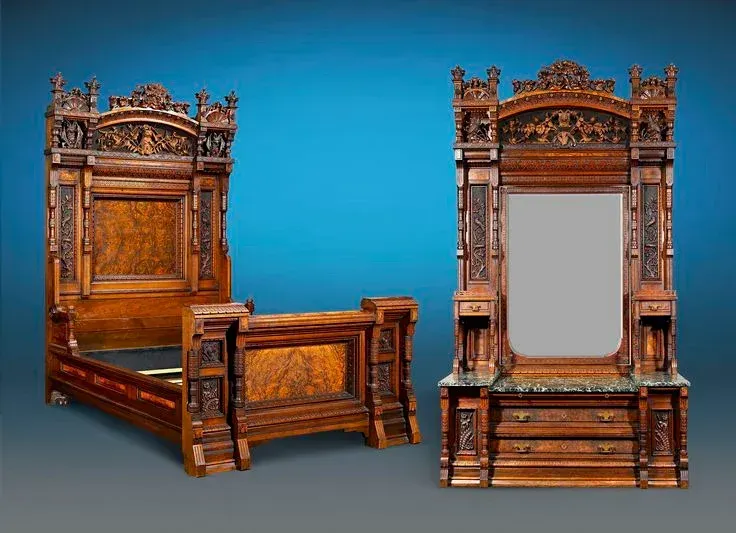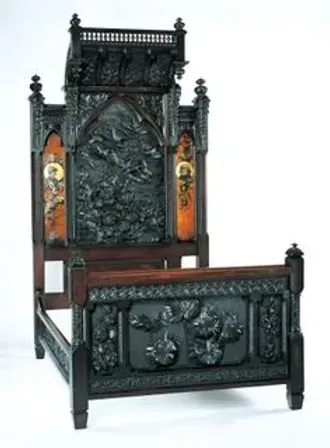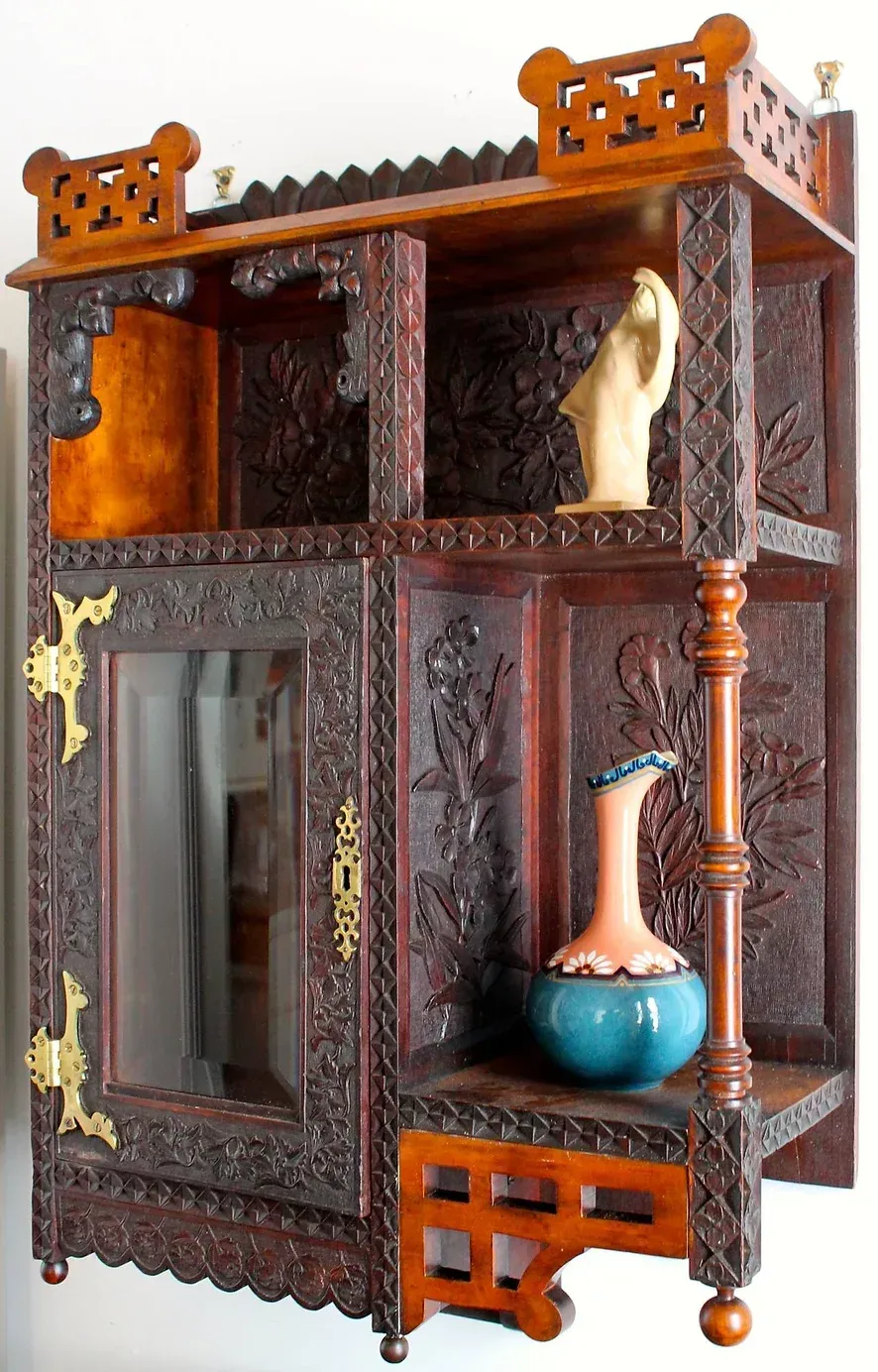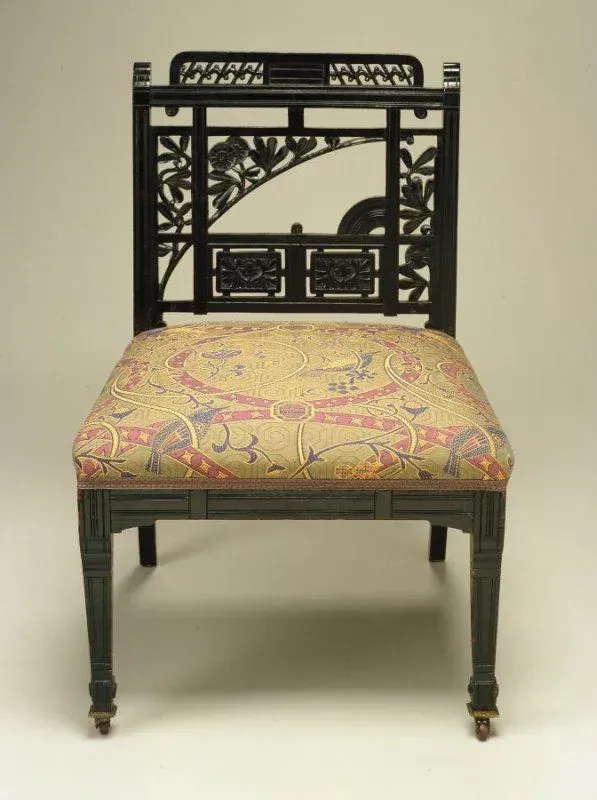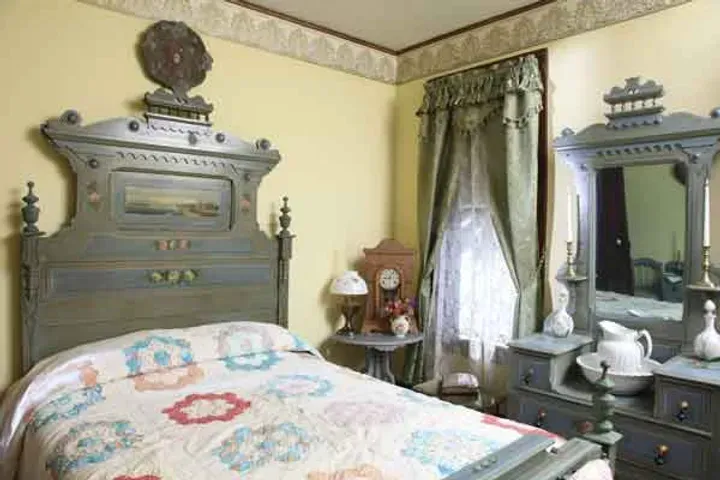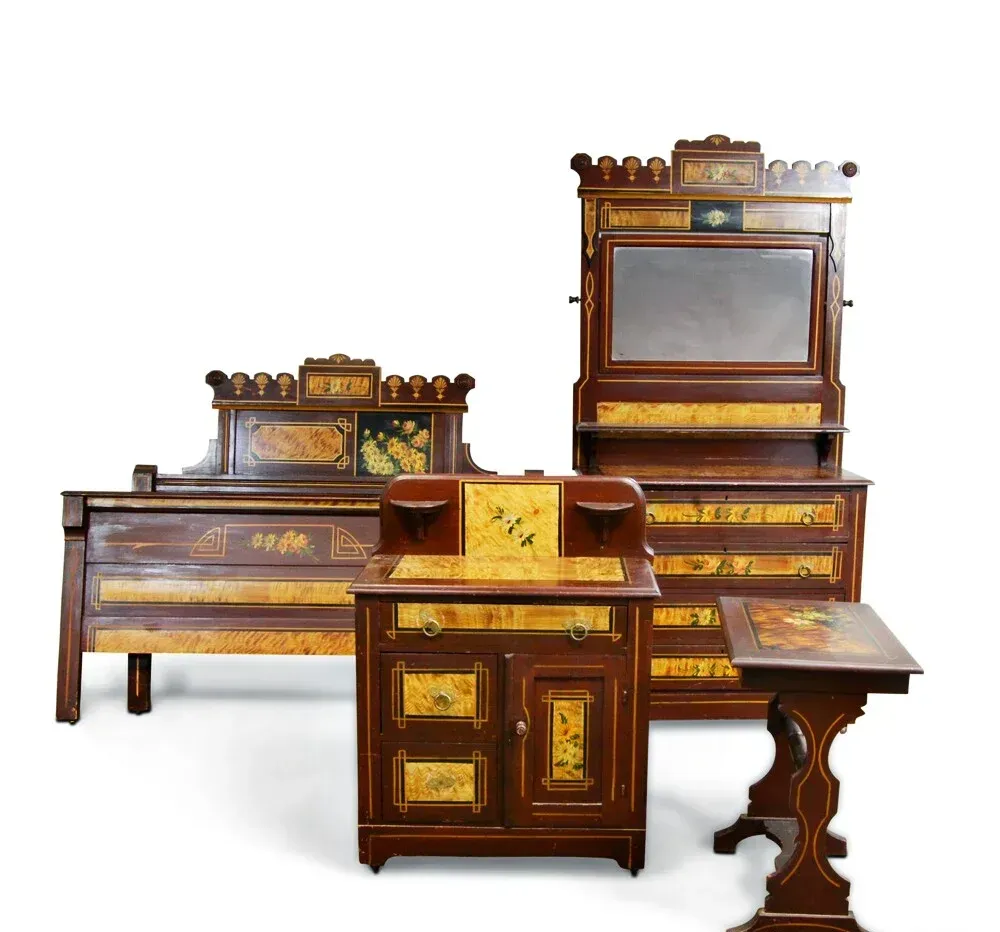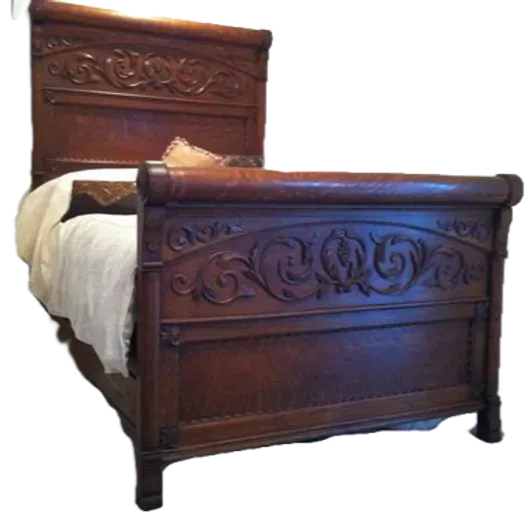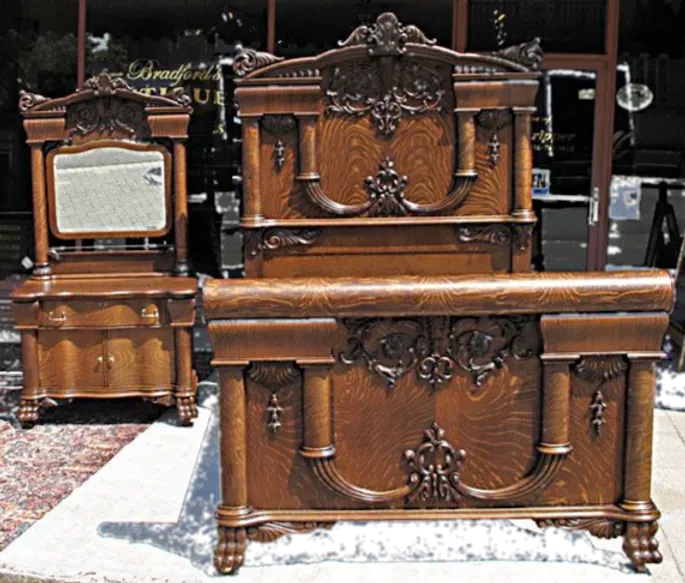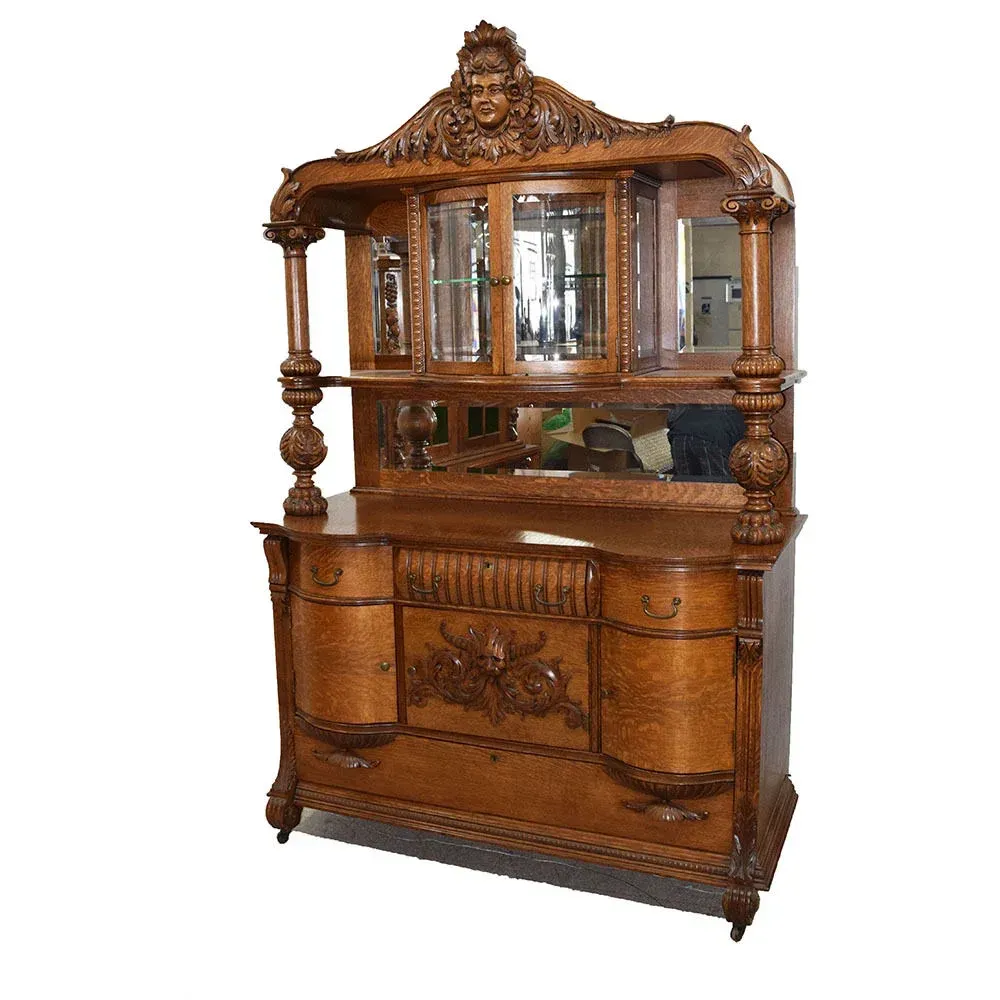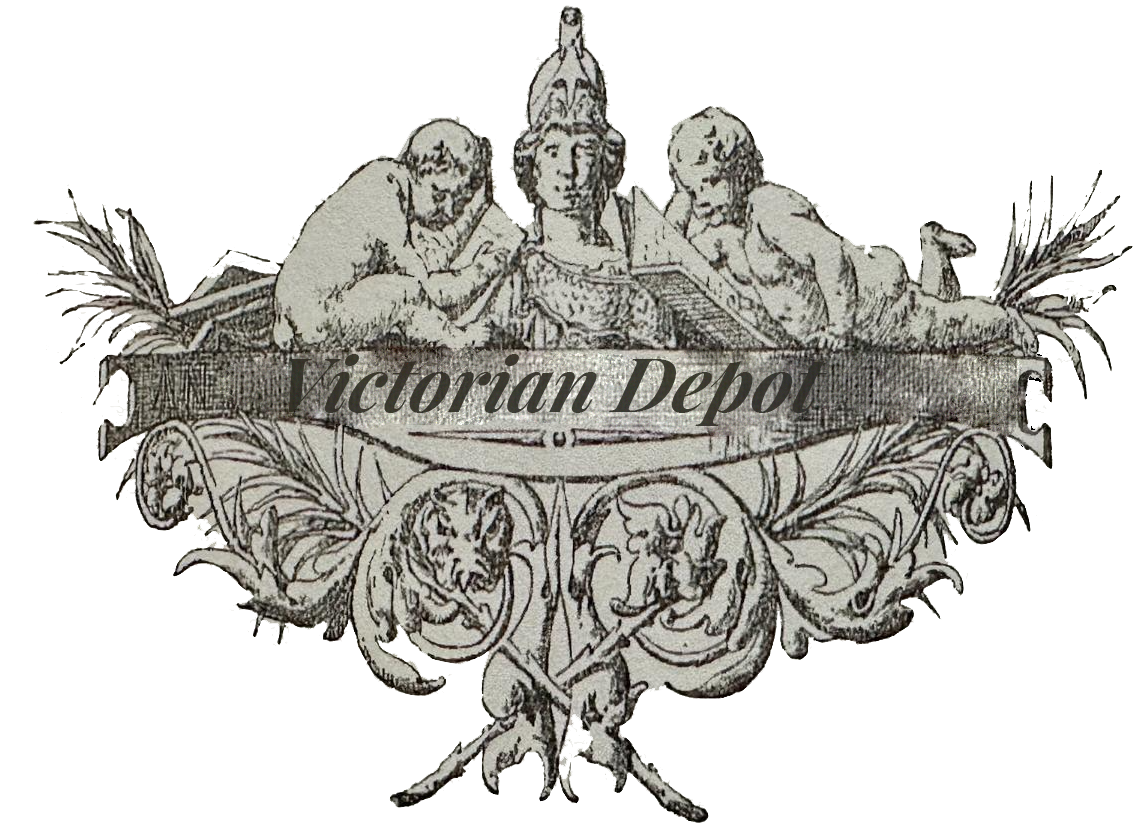
Types
of
Furniture
By
Victorian
Depot
Types
of
Furniture
By
Victorian
Depot
Furniture styles
This page is dedicated to giving some history on Victorian furniture and the different styles of furniture there was during the Victorian time period 1837-1901


Gothic Revival Furniture
The first style of Victorian Furniture we will discuss is Gothic Revival.
Gothic furniture creations saw a revival between 1840 and 1860. This is also called the era of Gothic Revival. Wooden fixtures belonging to this period are grouped under New Gothic Furniture or modern Gothic.
Gothic Revival 1840-1860- Gothic Revival was not the most lovable architecture and furniture style in Europe and United States in the 19th century. It was deemed uncomfortable, ornate and pretentious. Its chairs look like thrones, and its tables and sideboards have a massive presence that can at best be called dignified. Known for high backs, triangular peaks, quatrefoils, Trefoils, Griffins and Gargoyles.
The woods preferred by makers of this period were walnut and oak, with some use of mahogany and rosewood. Below are some examples of furniture of the period
Some Prominant Gothic Furniture Makers
Alexander Roux
Alexander Roux was a French-trained ébéniste, or cabinetmaker, who emigrated to the United States in the 1830s. He opened a shop in New York City in 1837. The business grew quickly: by the 1850s he employed 120 craftsmen in his shop and introduced then-new industrial technologies, such as steam-powered saws.
Joseph Meeks
(September 4, 1771 – July 21, 1868)[1] was a furniture maker in New York City who founded what would become a large firm that produced good quality furniture from 1797 to 1869.
Specialized in Gothic revival furniture and late Rococo revival furniture

Rococo Revival Furniture
Rococo Revival 1840-1870's-It was Medium to large scale, Tufted upholstery with interior springs, Symmetrical scrolls and curves, C and S curves, Lavish, high-relief carvings of nature motifs, Curved cabriole legs on casters, Marble tabletops, Mahogany, rosewood and walnut. Feminine, resulting in furniture mostly for the parlor and bedrooms
Examples of Rococo style
John Henry Belter, a well-known Rococo Revival furniture maker, used laminated rosewood with deep carving and pierce work, and thick, upholstered, tufted seats and backs. Even the fabric was elaborate with floral designs. Below are some examples of Rococo Revival Furniture

Renaissance Revival Furniture from 1860-1885
The next style of Victorian Furniture we will discuss is Rococo Revival.
Renaissance Revival 1860-1880-The American Renaissance Revival furniture of the 1860s and 1870s marked the first period in which fine designs were used for mass-produced furnishings. Furniture from the 1870s ranged from works made in shops employing skilled craftsmen to the products of large Midwestern factories. Massive and masculine in form, deeply carved ornamentation, portrait and mask medallions and square form. High backed and forms were used decoratively over structurally.
Some Prominent Renaissance Revival Furniture Makers
Herter Brothers
1864-1906 New York City New York
The firm of Herter Brothers, was founded by German immigrants Gustave and Christian Herter in New York City. It began as a furniture and upholstery shop/warehouse, but after the Civil War became one of the first American firms to provide complete interior decoration services. With their own design office and cabinet-making and upholstery workshops, Herter Brothers could provide every aspect of interior furnishing—including decorative paneling, mantels, wall and ceiling decoration, patterned floors, carpets and draperies. One of the greatest furniture makers of that time. Many pieces were privately commissioned for the elite in New York, Cleveland and San Francisco
Pottier and Stymus
1853-1897 New York City New York
August Pottier, an immigrant from France, and William P. Stymus Sr. opened the company in New York City in 1859. Their workshop was on 115 Wooster Street, and their salesroom was at 623 Broadway.[1] The company grew quickly, and by 1871 the firm's factory occupied a full block on Lexington Avenue and 42nd Street, on the present site of the Socony–Mobil Building. By 1872, they employed 700 men and 50 women. Contact us for Pottier & Stymus made furniture in the Neo-Greco, Renaissance Revival, Egyptian Revival, and Modern Gothic Styles for sale.
Thomas Brooks
1850-1870 Brooklyn New York
Thomas Brooks, was an important cabinet maker who supplied the New York market 1850's- the 1870's. He made a variety of elegant Victorian Renaissance Revival furniture such as bedroom sets, cabinets, bookcases, tables, and more, all of which are some of the most sought after American Victorian antiques in the world today.
M & H Shrenkeisen
1870-1880's New York New York
A fine furniture maker focused on a broader middle range quality of furniture for a larger moderate group of people. Some of their work is sometimes mistaken for John Jelliff pieces.
John Jelliff
1840-1876 Newark New Jersey
John Jelliff was Newark's most important furniture, chair, and cabinetmaker of the second half of the 19th century. Very few came close to replicating Jelliff's talents and accomplishments. For 50 of his 80 years, Jelliff ruled supreme as a leading Newark businessman and artist. Many of his pieces featured turned, tapered legs and carver faces on the arms and crest both female and male.
George Hunzinger
1835-1898 New York New York
Inventor and cabinet maker. Maker of very unique style of furniture mostly in the Renaissance revival style. Maker of the patented folding chair.

Eastlake Movement Furniture
The next style of Victorian Furniture we will discuss is Eastlake Movement furniture .
Eastlake Movement Victorian 1870's-1890's-The American Eastlake Movement furniture of the 1870's and 1890's was considered late Victorian and one of the last of the Victorian era. Eastlake Movement was named after the English architect Charles Locke Eastlake (nephew of Sir Charles Lock Eastlake) following the release of his influential book ‘Hints on Household Taste in Furniture, Upholstery and Other Details’. it came about as a response to his aversion to the over-the-top Rococo Revival and Renaissance Revival styles popular during the Victorian era. Eastlake furniture is still decorative, even if less prominently so than other Victorian styles. Look for geometric or floral motifs, carved in low relief, as well as those geometric brackets and turned spindles, spoon carving and a mixture of ebonizing and gilding. The furniture was square in form, not as tall as the previous styles but was at times very simple and other times a mixture of all the other styles with an Japanese and Egyptian influence. To many the most sought after of all Victorian furniture.

Aesthetic Movement Furniture
The next style of Victorian Furniture we will discuss is Aesthetic Movement which is part of the Eastlake Movement furniture .
Aesthetic Movement Victorian 1870's-1890's-The American Eastlake Movement furniture of the 1870's and 1890's was considered late Victorian and one of the last of the Victorian era. Part of that movement was a movement that incorporated.
A reaction against Victorian mass production, precursor to the Arts & Crafts gestalt, the movement of Ruskin, Morris, and Oscar Wilde has been called the “cult of beauty.”
A precursor to British Arts & Crafts reform, the Aesthetic Movement embraced Anglo–Japanese furniture. Popular motifs include the stork, sunflower, and lily's.
In the U.S., New York cabinetmakers the Herter Brothers dabbled in their own version of Anglo–Japanese style by the mid-1880s.
The flat planes, stylized designs, and nature-inspired motifs of the Anglo–Japanese style included storks and owls carved in the backs of chairs, beetles and spiders crawling up the handles

Victorian Cottage Furniture
The next style of Victorian Furniture is cottage furniture which is part of the Eastlake Movement furniture .
Victorian Cottage furniture 1840's-1890's-The poor mans answer to Victorian. These pieces were in Eastlake styling as well as in earlier Gothic and Renaissance revival styling but more affordable for the general public. Considered less pretentious. Created mainly for Cottage homes. It was quite poular.
Usually in white, light grey and light blue colors. Very rare to find these days.

Golden Oak Furniture
The next and final style of Victorian Furniture era is Golden Oak furniture which is a wonderful era with a wide range of furniture from the subdued taste influenced by The Eastlake movement to a revival of over the top carving and excess similar to the Rococo Revival style earlier with works by R J Horner
Golden Oak and custom furniture 1890's-1901-
Notable Cabinet and Furniture Makers of the Victorian Era
- John Henry Belter- Rococo revival
- Herter Brothers- Renaissance revival, Eastlake, Aesthetic movement, Egyptian Revival
- Pottier and Symus- Renaissance revival, Eastlake, Aesthetic movement, EgyptianRevival
- George A Schastey
- Thomas Brooks- Renaissance Revival
- Berkey and Gay- Gothic Revival, Rococo Revival and Renaissance Revival
- Francois Seignouret
- Brazilia Deming & Eratus Bulkley
- RJ Horner
- Killian Brothers- Renaissance Revival, Eastlake and Aesthetic Movement
- Leon Marcotte-Renaissance Revival, Eastlake and Aesthetic Movement
- Alexander Roux- Gothic Revival and Rococo Revival
- John Shaw
- Elija Galusha
- Henry Heitman
- Joseph Conrad
Contact Me today
What We Offer
All Rights Reserved | Victorian Depot
We use cookies to ensure that we give you the best experience on our website.

